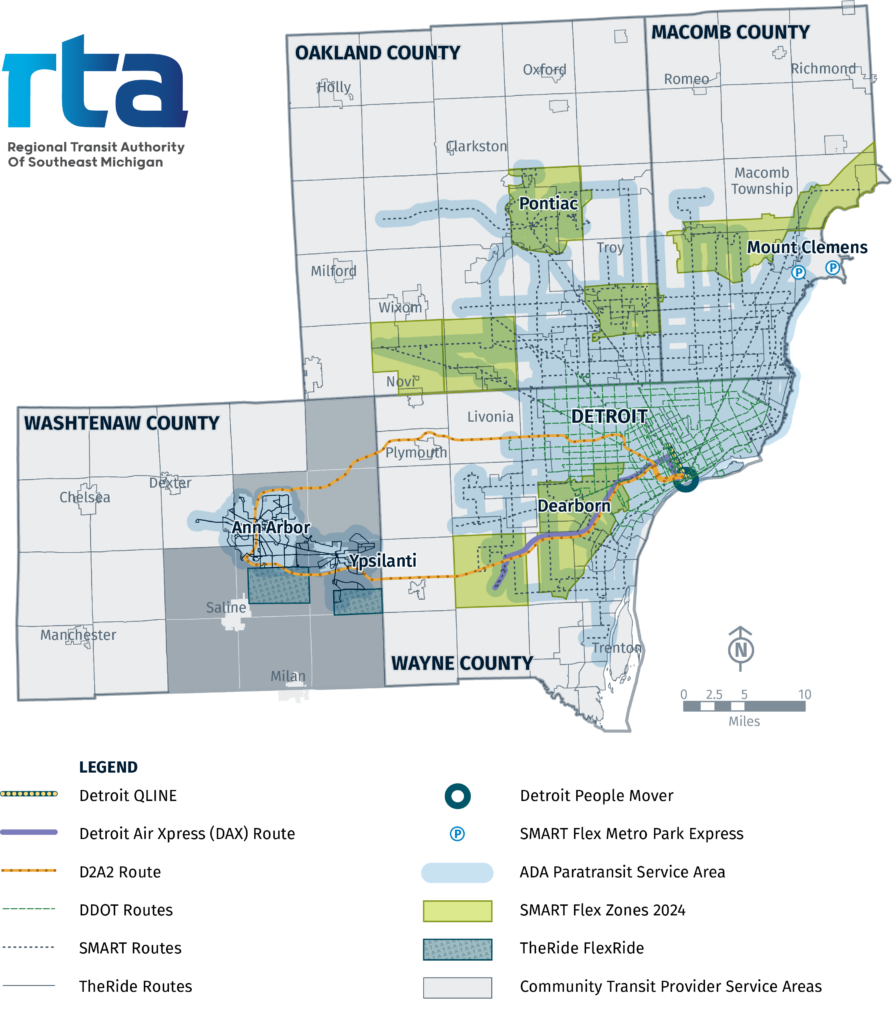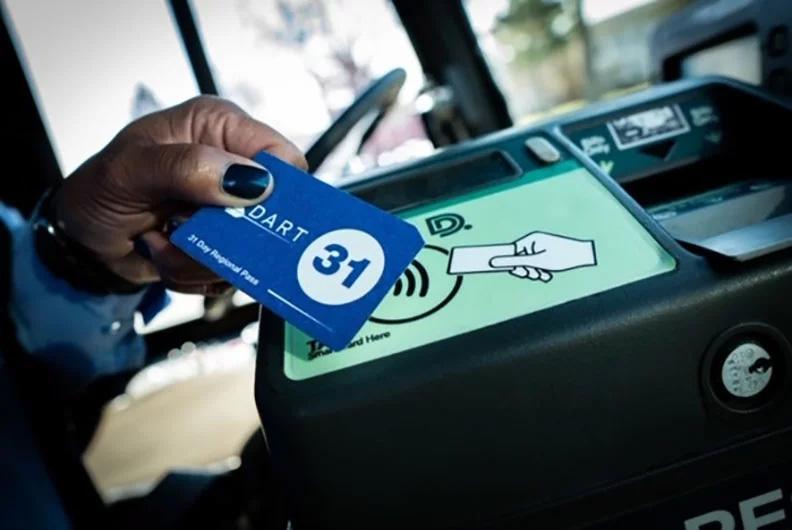Get on Board!
Let’s get you ready to take public transit, whether you’re a first-time rider or a regular commuter.
Step 1: Find the service that’s right for you
Five major public transit providers and many more small and community providers serve the four-county RTA region. Find the providers serving your community, and visit their websites for more information.
- DDOT
- Detroit and parts of Wayne County
- Detroit Air Xpress (DAX)
- Downtown Detroit to DTW Airport
- Detroit Ann Arbor Express (D2A2)
- Downtown Detroit to Downtown Ann Arbor
- The Detroit People Mover
- Downtown Detroit
- MoGo
- Detroit and Southern Oakland County
- QLINE
- Detroit
- TheRide
- Greater Ann Arbor and Ypsilanti Area
- SMART
- Macomb, Oakland, and Wayne counties
Accessibility: We’re here to help you travel as you are. Several transportation providers specifically serve senior and disabled riders: Learn about programs for accessible transit services and stay connected with MyRide2 trip assistance.

Step 2: Check the schedule
Check the route and stops along all legs of your trip. Many providers post real-time scheduling information on their websites.
Questions?
You can reach out to individual transit providers, use common mapping and navigation tools from Google, Transit App, or Apple, or contact MyRide2. We can help you find the resources that get you where you need to go.
Step 3: Figure out what you owe and how you’re paying
| DDOT: $2, pass programs and reduced fare, transfers between DDOT and SMART | QLINE: Free |
| D2A2: $6 in advance on website, $2 for frequent travelers, no transfer | TheRide: $1.50, pass programs and reduced fare, transfers to other TheRide services |
| DAX: $6 in advance on website, $2 for frequent travelers, no transfer | SMART: $2, pass programs and reduced fare, transfers between DDOT and SMART |
| The Detroit People Mover: Free | MoGo: $1 to unlock, $.25 per minute, pass programs and reduced fare |
Reduced Fares & Pass Programs
Some RTA services and partners offer discounts through passbooks, and many have additional discounts for students, seniors, people with disabilities, and people registered for state benefit programs like Medicaid.
Step 4: Arrive at least five minutes early
Transit providers do their best to run on schedule and usually run on time. But it’s best to plan for a few minutes’ breathing room, in case weather, traffic, or other factors impact your ride. Arrive early, and look to live-tracking navigation options, including apps and text or call options.
Step 5: Learn the policies for your ride
Do your best to be courteous and safe while sharing the ride on all public transit. For example, keep priority seats available for those who may need them, like seniors and people with disabilities. Each transit option may have small differences in rules or processes.
Bike Policy
Many services, like fixed-route buses, have easy-to-use bike racks. There is no additional fare for bikes. Learn more about how to use a bike rack.
If using a MoGo bike on your trip, you will need to dock your bike before boarding other transit, and check out a new MoGo bike at your next station.
Safety
The data is clear: public transit is safer than driving. And transit partners maintain a clean, safe trip for all. But safety is a shared responsibility. Be aware of moving vehicles when boarding. When on board, sit or hold a rail when standing, and exit all vehicles through the correct doors. If you have any questions, talk to your driver.
Step 6: Relax until arrival!
Enjoy the ride. Instead of focusing on the wheel, enjoy wide windows, comfortable seating, and free Wi-Fi with some services. Take part in a livable, healthy community while you reduce greenhouse gases and increase economic growth. Learn more about the value of public transit for vibrant and sustainable communities.



